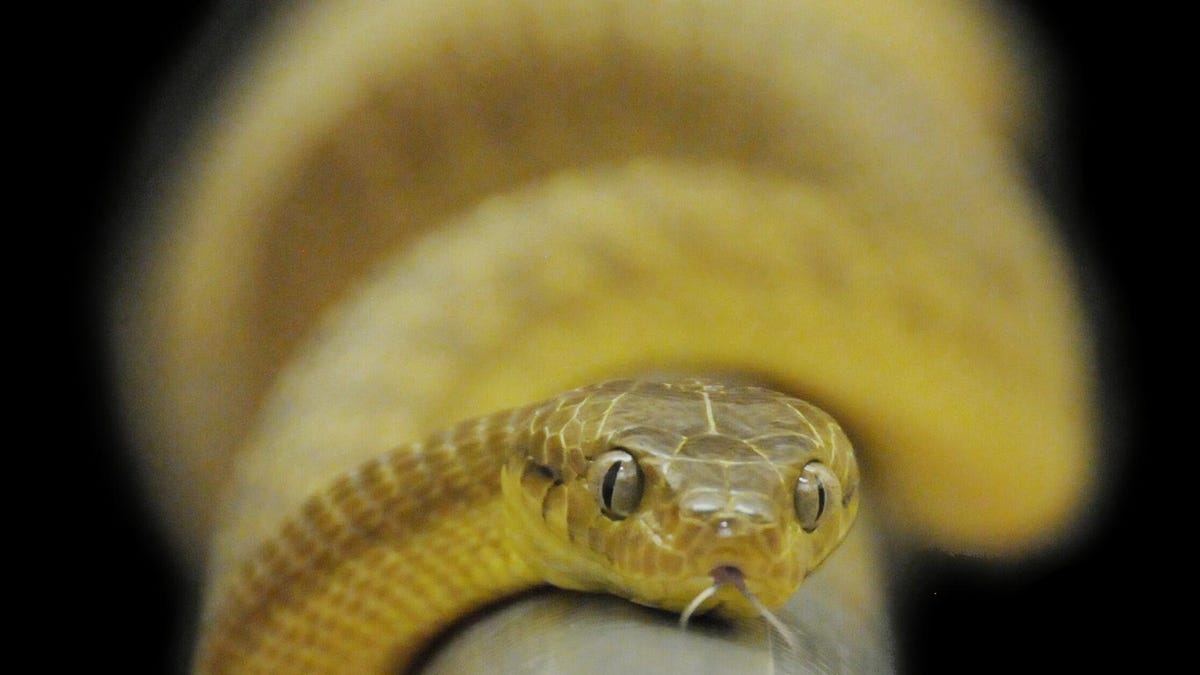Snakes are climbing poles using a terrifying new technique
"We watched that part of the video about 15 times. It was a shocker. Nothing I'd ever seen compares to it."

Brown tree snake on a pole -- now more frightening than before.
New video footage will no doubt fuel the nightmares of both full-on ophidiophobes and those who simply cringe at the notion of a snake climbing the nearest pole to grab a snack.
Researchers have discovered that the brown tree snake can twist its body into the shape of a lasso to use a never-before-seen form of locomotion to climb a smooth, vertical pole.
The scientists say this lasso locomotion becomes just the fifth known mode of locomotion for snakes, along with sidewinding, lateral undulation, rectilinear (in which rib muscles flex in succession to act almost like a series of legs) and concertina (a combination of gripping, pulling or pushing with different points on the body).
The discovery came as a surprise during a project in Guam where researchers were working to protect the nests of Micronesian starlings from serpents. Three-foot-long cylindrical metal baffles were assembled to prevent snakes from climbing the bird boxes.
Turns out the tree snakes had an app for that.
"Initially, the baffle did work, for the most part," Tom Seibert, a Colorado State University emeritus wildlife biology professor, said in a statement. "Then all of a sudden, we saw this snake form what looked like a lasso around the cylinder and wiggle its body up. We watched that part of the video about 15 times. It was a shocker. Nothing I'd ever seen compares to it."
Seibert is a co-author on a paper about the discovery published Monday in Cell Press journal Current Biology.
The lasso method is unlike the concertina form of motion, in which snakes typically grip a surface at two or more points on their body and then climb by pulling or pushing their way up. Instead, the researchers explain, the tree snake wrapped the lower part of its body around the cylinder like a lasso to create a single gripping area that it then uses to push itself straight up the smooth metal surface. The process is broken down in more detail in the above video.
"The snake has these little bends within the loop of the lasso that allow it to advance upwards by shifting the location of each bend," said co-author Bruce Jayne from the University of Cincinnati, adding that going full lasso isn't exactly easy for the snakes. "Even though they can climb using this mode, it is pushing them to the limits. The snakes pause for prolonged periods to rest."
So next time you think that bird's nest atop a light pole is safe from a snake attack, think again. Even a slick metal pole could look like a ladder to a brown tree snake.
The researchers say the discovery could lead to new methods to better protect starlings and other birds in the future.
"I've been working on snake locomotion for 40 years and here, we've found a completely new way of moving," Jayne said. "Odds are, there is more out there to discover."

